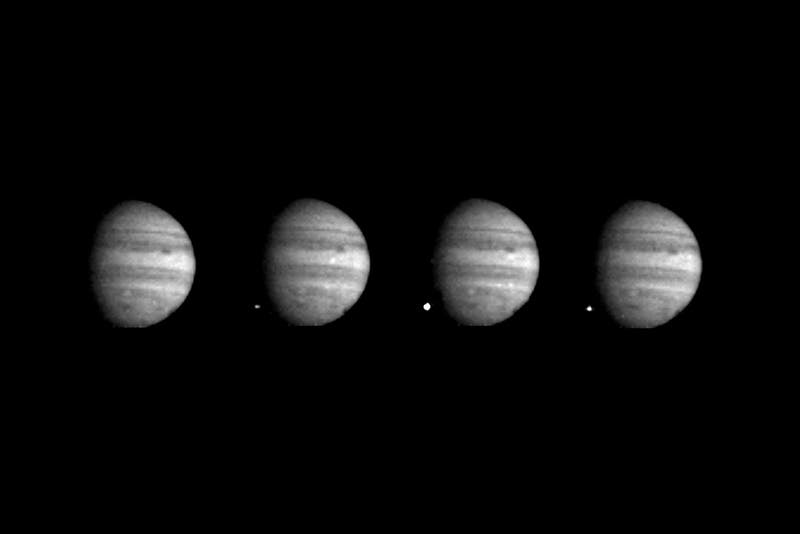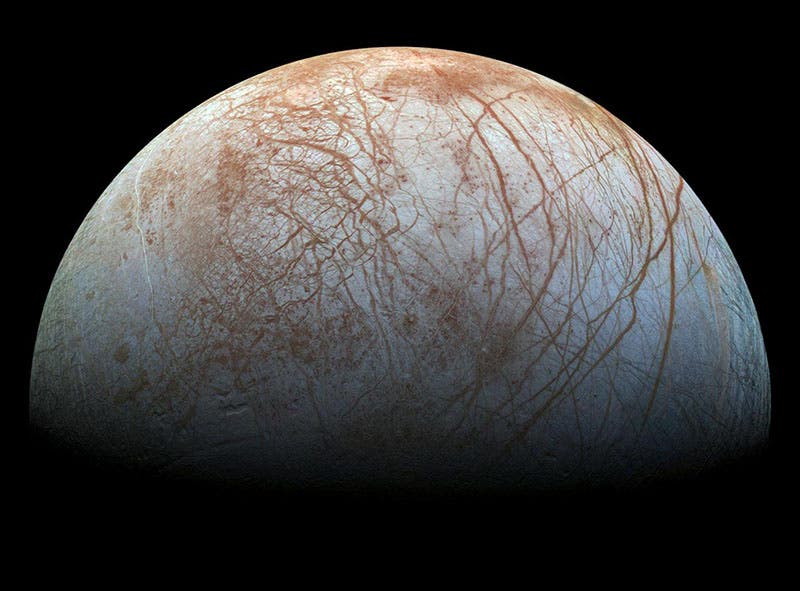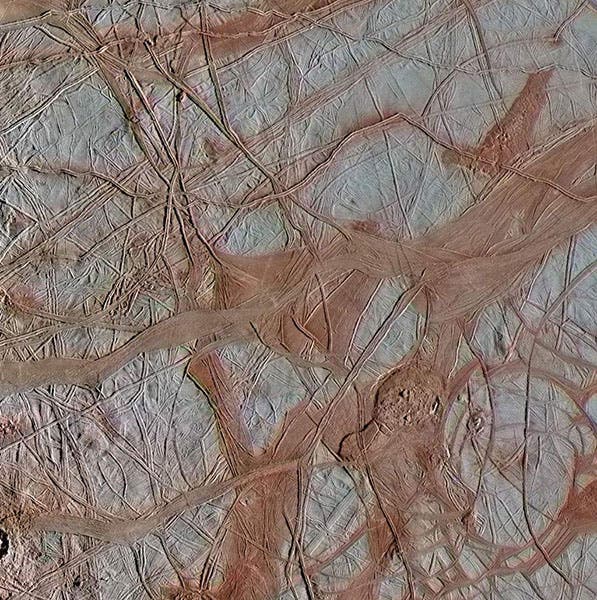Scientist of the Day - Galileo the spacecraft
The Galileo spacecraft was launched aboard the space shuttle Atlantis on Oct. 18, 1989. and placed into Earth orbit the next day. Galileo's mission was to travel to Jupiter, orbit the planet, study its moons, and send a probe down to Jupiter to examine its atmosphere. The idea for the Galileo mission originated shortly after the Voyager missions were launched in 1977, but Galileo was plagued by a series of delays, as the mission was reconceived several times, and then shelved along with all other shuttle-based missions when the Challenger exploded in 1986. And then, once Galileo was finally launched, it had to bide its time for over six years, as it had insufficient thrust to go directly to Jupiter, and was forced to slingshot several times around Venus and the Earth to build up velocity before finally heading toward the Big Planet, which it reached in December 1995.
Its troubled childhood notwithstanding, Galileo's professional life was long and distinguished. Some of its more notable successes occurred on the journey out. Galileo took the first close-up image of an asteroid, when it photographed 951 Gaspra on Oct. 29, 1991, shortly after entering the asteroid belt (first image). Twenty-two months later, Galileo recorded an image of another asteroid, 243 Ida, and discovered, quite to everyone's surprise, that Ida had its own satellite moon, a tiny chunk that was soon named Dactyl. You can see Dactyl, the tiny bright blip on the right, in the photograph of Ida (third image).
As it flew by Earth the second time, building up speed, Galileo also learned how to detect the presence of life on a planet. Carl Sagan, who had spent much of his career trying to detect extraterrestrial life, wondered if the Earth had any kind of a signature that would mean "life" to an outside observer. So he arranged for Galileo to scour our planet for any signals of life. Galileo discovered several: Earth tends to absorb more red light than it should (used by chloroplasts in photosynthesis); there is another absorption band caused by oxygen (which is produced by living things); there is more methane in the atmosphere than there should be (methane is another byproduct of life); and there is a lot of modulated radio noise about. These are now known as the “Sagan criteria," hallmarks of oxygen-based life (and the last, a sign of intelligent life).
Just before it reached Jupiter, Galileo was offered an unexpected opportunity to observe an epic cosmic impact. Comet Shoemake-Levy 9 was on a collision course for Jupiter, and one of its largest fragments was set to splash into Jupiter's atmosphere at a point on the dark side of the planet, where it could not be seen from Earth. Galileo happened to be in just the right spot to take a series of images of the collision (fourth image). The impact is the bright spot on the left, where the rest of Jupiter’s surface is dark.
Once it went into orbit about Jupiter (the first spacecraft to orbit an outer planet), Galileo spent some years observing Jupiter's four large moons (called the Galilean moons, appropriately): Io, Europa, Ganymede, and Callisto (see mosaic of four photographs, fifth image). While these planets had been photographed in flybys n 1979 by Voyager 1 and 2, which discovered Io's active volcanism and Europa's network of surface cracks, there were still surprises in store for Galileo. The biggest one was the discovery of a subsurface ocean of liquid water under the icy outer layer of Europa. Wherever there is liquid water, there is a possibility of life, so that was a major discovery for those engaged in the search for extraterrestrial life. The photographs of Europa's surface by Galileo are also exquisite examples of the cream of astrophotography (sixth and seventh images).
Because there was now possibility of life on Europa, mission planners had to consider the possibility, however slight, that Galileo, when it was no longer able to control its orbit, might crash into Europa and contaminate it, so it was decided to guarantee Europa’s continued isolation by deliberately crashing Galileo into Jupiter. Galileo plummeted into the mother planet on Sep. 21, 2003, not as gaudy an exit as Fragment W of Comet Shoemaker-Levy, but a momentous end, nevertheless, to a successful, image-rich mission.
William B. Ashworth, Jr., Consultant for the History of Science, Linda Hall Library and Associate Professor emeritus, Department of History, University of Missouri-Kansas City. Comments or corrections are welcome; please direct to ashworthw@umkc.edu.













